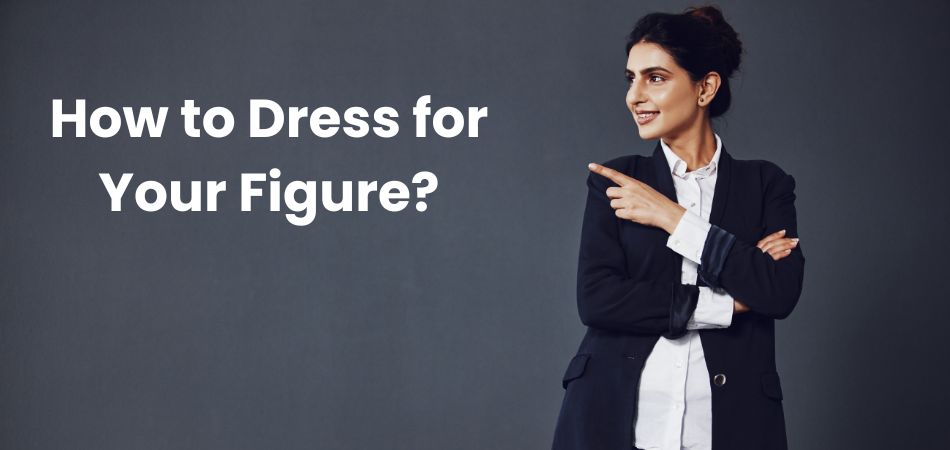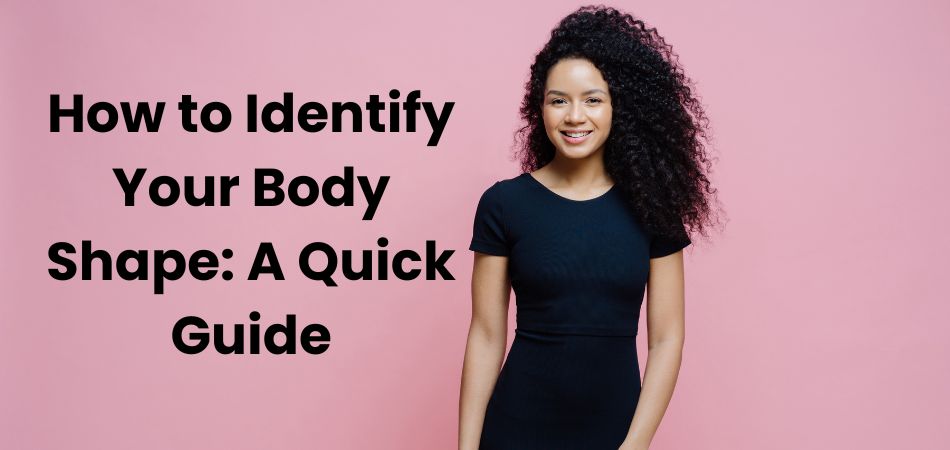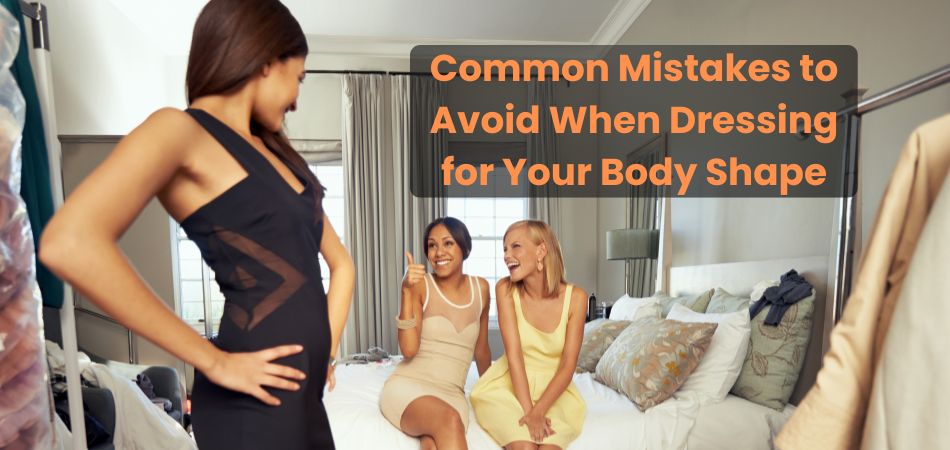Dressing to flatter your body shape is all about highlighting your best features and feeling confident in your own skin. Whether you’re curvy, petite, tall, or athletic, knowing how to dress for your figure can make a world of difference in how you look and feel.
To dress for your figure, choose clothing that highlights your best features and balances your proportions. Focus on well-fitted styles, flattering cuts, and colors that complement your shape, ensuring confidence and comfort in every outfit.
Would you like to learn the secrets to looking your best every day? Keep reading for expert tips that will help you dress with confidence and style.
How to Dress for Your Figure?
Dressing correctly for your figure is key to feeling and looking your best. The right clothing choices can highlight your strengths and balance your proportions effortlessly. Here are some essential guidelines to help you dress for your individual shape with confidence.

Identify Your Body Shape
The first step to dressing well is identifying your body shape. Common body types include pear, apple, hourglass, rectangle, and inverted triangle. Each shape has personal characteristics that influence how clothes fit and flatter. Knowing your shape helps you make informed choices about cuts, patterns, and styles. Once you identify your shape, dressing to maximize your best features becomes much easier.
Choose Flattering Silhouettes
Selecting the right silhouettes can make all the difference in your overall appearance. A-line skirts, empire waist dresses, and sleek blazers are great options for creating a balanced look. If you have an hourglass figure, fitted styles that highlight your waist are ideal. For rectangular body types, adding volume with ruffles or layers can create curves. The key is to choose styles that improve your natural proportions.
The Importance of Proper Fit
No matter your body shape, wearing clothes that fit well is essential. Avoid clothing that is too tight or too loose, as it can distort your proportions. Personalizing is a great way to ensure that your clothing complements your figure perfectly. Investing in well-fitted essentials like jeans, blazers, and dresses can improve your wardrobe. A good fit enhances your confidence and comfort in any outfit.
Selecting the Right Fabrics
Fabric choice plays a crucial role in how clothing drapes on your body. Flowy fabrics like chiffon and silk can create a soft, elegant look, while structured fabrics like cotton and denim add definition. If you’re looking to create a slimming effect, opt for fabrics with a bit of stretch. Heavier fabrics can provide structure and support for curvier figures. Choosing flattering styles can be easier if you understand fabric properties.
Balancing Colors and Patterns
Colors and patterns can visually alter the perception of your body shape. Darker colors create a slimming effect, while lighter shades can draw attention to certain areas. Vertical stripes can elongate the body, while horizontal stripes can add width. If you want to accentuate your upper body, opt for bold patterns on top and solid colors on the bottom. The right color and pattern combinations can work wonders in increasing your figure.
Using Accessories to Your Advantage
Accessories are powerful tools that can highlight your best features and add personality to your outfit. A statement belt can define your waist, while long necklaces can elongate your torso. Shoes and handbags can also play a role in balancing proportions. Choosing accessories that complement your outfit can create a polished, well-put-together look. The right accessories can effortlessly upgrade your style.
Layering for Proportion and Style
Layering can be an excellent way to add depth and interest to your outfit while balancing your proportions. Wearing structured outerwear, such as blazers or cardigans, can create a slimming effect. Layering longer pieces over shorter ones can elongate your frame. Mixing textures and colors in layers can also add dimension without overwhelming your figure. Learning basic layering techniques helps you stay stylish year-round.
Developing Your Personal Style
While dressing for your body shape is important, your personal style should always shine through. Confidence is the key to pulling off any look, regardless of trends. Choose pieces that make you feel comfortable and reflect your personality. Don’t be afraid to experiment with new styles while staying true to what makes you feel great. Respecting your individuality will always be the best fashion statement.
What Does Dressing for Your Figure Really Mean?
Dressing for your figure isn’t just about following fashion trends; it’s about wearing clothes that emphasize your natural shape and reflect your personality. It means finding out how different styles, cuts, and details work to complement your body. The goal is to create a balanced and flattering look that makes you feel comfortable and confident.
Assessing Your Unique Proportions
Everyone’s body is unique, with different proportions that require thoughtful styling. Dressing for your figure means recognizing how elements like torso length, leg proportion, and shoulder width can affect your overall look. By emphasizing these proportions, you can choose clothing that creates a harmonious balance.
Highlighting Strengths Instead of Hiding Flaws
Rather than focusing on hiding perceived flaws, dressing for your figure is about emphasizing your best features. Whether it’s your toned arms, defined waist, or long legs, choosing clothes that highlight these areas helps you feel your best. The key is to shift the mindset from concealment to confidence.
Finding Comfort in the Right Choices
True style isn’t just about looking good—it’s also about feeling good. Dressing for your figure means selecting clothing that provides both comfort and style, ensuring that you can move freely and confidently. When you’re comfortable in what you wear, your self-assurance naturally shines through.
Dressing with Intention for Every Occasion
Each occasion calls for a different approach to dressing, and understanding your figure helps you make the right choices. Whether it’s a formal event or a casual outing, wearing clothes that align with your body shape ensures a polished and appropriate look. Dressing with intention means considering both function and aesthetics.
Adapting Fashion Trends to Suit You
Not all trends are designed for every body type, and dressing for your figure means knowing what works for you. It’s about adapting current styles to complement your shape rather than following trends blindly. Smart fashion choices allow you to stay stylish while maintaining a look that feels authentic to you.
How to Identify Your Body Shape: A Quick Guide
Knowing your body shape is the first step to dressing in a way that enhances your natural proportions. It helps you make smarter style choices that highlight your best features and create a balanced look. Here’s a quick guide to help you identify your body shape and clarify what makes each one unique.

1. Measuring Key Areas of Your Body
To determine your body shape accurately, start by measuring key areas such as your shoulders, bust, waist, and hips. These measurements help you understand how different parts of your body compare in proportion. Keeping a record of your measurements can make it easier to recognize patterns and identify your shape.
2. Observing Your Natural Silhouette
Stand in front of a mirror and observe how your body naturally curves and aligns. Pay attention to whether your shoulders are broader than your hips, if your waist is well-defined, or if your figure appears more linear. Your silhouette provides valuable clues about your body shape without the need for precise measurements.
3. Comparing Your Proportions to Common Shapes
Body shapes are typically categorized into common types like pear, apple, rectangle, hourglass, and inverted triangle. Compare your proportions to these shapes to see which one aligns best with your natural figure. Learning these common categories can simplify the process of identifying your shape.
4. Recognizing Weight Distribution Patterns
Where you naturally gain or lose weight can also help in identifying your body shape. Some people carry weight in their hips and thighs, while others store it in their midsection or upper body. Observing these patterns over time gives insight into your dominant body shape.
5. Taking Note of Your Bone Structure
Your skeletal frame plays a role in defining your body shape, especially in areas like your shoulders, hips, and wrists. A narrow or wide frame can influence how clothes fit and which styles are most flattering. Recognizing your bone structure helps in choosing silhouettes that complement your natural frame.
6. Seeking Professional Advice for Clarity
If you’re unsure about your body shape, seeking advice from a professional stylist or clothing designer can provide helpful insights. They can assess your proportions and suggest styles that suit you best. A second opinion can give you a fresh perspective and a better picture of your signature figure.
Build Confidence Through Your Personal Style
Your personal style is more than just the clothes you wear—it’s a reflection of your personality, values, and confidence. Dressing in a way that feels authentic to you can positively impact your self-esteem and how others perceive you. Here are some ways to build confidence through your personal style.
- Discover What Makes You Feel Good: Wearing clothes that make you feel comfortable and happy is the foundation of personal style. When you feel good in what you wear, your confidence naturally shines through.
- Experiment with Different Styles: Trying out different fashion styles helps you discover what truly represents you. Exploring new looks can be empowering and help you step outside your comfort zone.
- Invest in Timeless Pieces: Classic wardrobe staples, like a casual blazer or a little black dress, can boost your confidence in any setting. Timeless pieces give you a reliable foundation to build upon with trendy additions.
- Dress for Your Mood and Goals: Your outfit can influence how you feel and how productive you are throughout the day. Dressing with intention can help you feel more motivated and aligned with your aspirations.
- Smile at Colors That Uplift You: Colors have the power to influence your mood and how others perceive you. Choosing shades that complement your skin tone and personality can give you a sense of empowerment.
- Design Your Wardrobe to Fit Your Lifestyle: Your style should align with your daily activities and responsibilities. When your wardrobe suits your lifestyle, you’ll feel more confident and comfortable in every situation.
- Own Your Exclusive Style Choices: Confidence comes from recognizing your individuality and expressing it through fashion. Owning your style choices without seeking validation from others allows you to shine authentically.
Common Mistakes to Avoid When Dressing for Your Body Shape
Dressing for your body shape is about enhancing your natural proportions and feeling confident in your clothing choices. However, many people unknowingly make style mistakes that can undermine their overall look. Here are some common pitfalls to avoid when dressing for your body shape.

- Wearing Oversized or Undersized Clothing: Choosing clothes that are too loose or too tight can distort your natural proportions and make you feel uncomfortable. Instead, focus on well-fitted pieces that enhance your shape without overwhelming it.
- Ignoring Balance and Proportion: Wearing items that emphasize one part of your body too much can create an unbalanced look. Try to distribute visual weight evenly by pairing fitted pieces with looser ones.
- Sticking to One Style Without Experimentation: Limiting yourself to a single style can prevent you from discovering what truly flatters your body shape. Experimenting with different cuts and silhouettes can help you find the best options that suit your figure.
- Neglecting Undergarments That Provide Proper Support: The right undergarments create a smooth foundation and enhance the fit of your clothing. Ill-fitting bras or shapewear can affect your posture and how your outfits look on you.
- Following Every Fashion Trend Blindly: Just because a trend is popular doesn’t mean it’s suitable for your body shape. Adapt trends to fit your unique proportions rather than forcing styles that don’t work for you.
Answers to Some Common Questions
Many people have questions about how to dress in a way that enhances their natural shape and reflects their style preferences. Being familiar with your body and making informed fashion choices can help you feel more confident. Here are some frequently asked questions to help you begin dressing for your figure with ease.
1. How Do I Know if a Certain Style Suits My Body Shape?
Try different styles and observe how they make you feel and look in the mirror. Pay attention to how the clothing fits your proportions and whether it highlights your best features. If it improves your confidence and comfort, it’s likely a good choice for your shape.
2. Can I Mix and Match Different Styles Even if They Are Not Typically Recommended for My Body Shape?
Yes, fashion should be an expression of your personality, so don’t be afraid to experiment. Mixing styles allows you to create a unique look that represents you. Just ensure that the pieces you combine maintain balance and proportion for a flattering appearance.
3. Are There Any Specific Accessories That Work Best for Certain Body Shapes?
Yes, accessories can enhance or balance your body shape when chosen thoughtfully. Long necklaces can elongate your torso, while wide belts can define your waist. Choosing accessories that complement your proportions can add a stylish touch to any outfit.
4. How Do I Update My Wardrobe Without Buying All New Clothes?
Start by incorporating a few versatile pieces that flatter your body shape and complement your existing wardrobe. Focus on layering, accessorizing, and repurposing what you already own in new ways. Smart styling can make old clothes feel fresh and updated.
5. Can Dressing for My Body Shape Improve My Confidence?
Absolutely! Wearing clothes that fit well and highlight your best features can significantly boost your self-esteem. When you feel good in your outfit, it positively impacts how you carry yourself and interact with others.
Final Words
Dressing with confidence starts with finding out how to dress for your figure in a way that compliments your natural shape and reflects your personality. By choosing the right styles, colors, and fits, you can create a wardrobe that makes you feel comfortable and empowered every day.
Remember, fashion is not about following trends blindly but discovering what works best for you. Whether you’re dressing for work, a casual outing, or a special event, wearing clothes that complement your figure can boost your confidence and leave a lasting impression.
